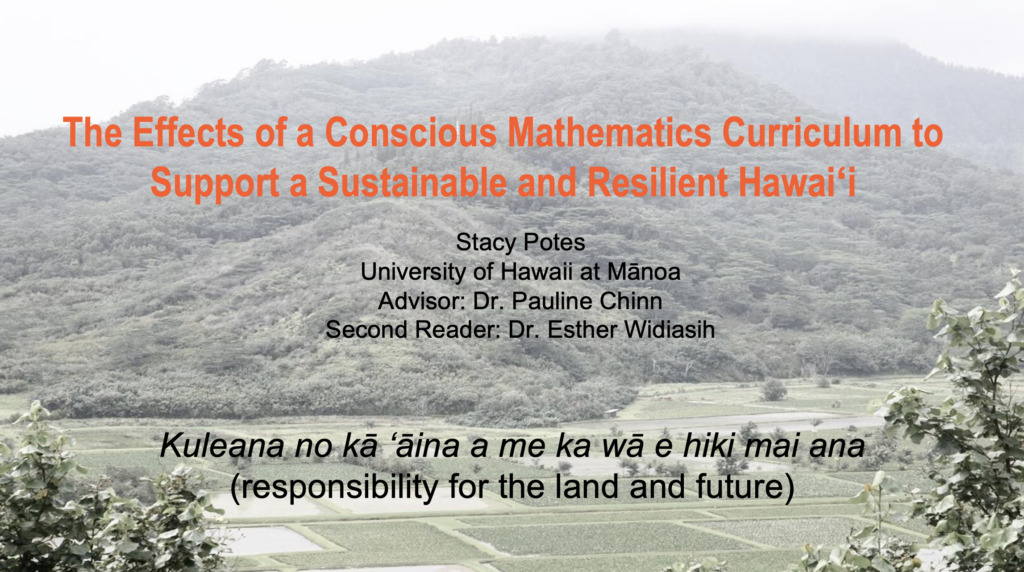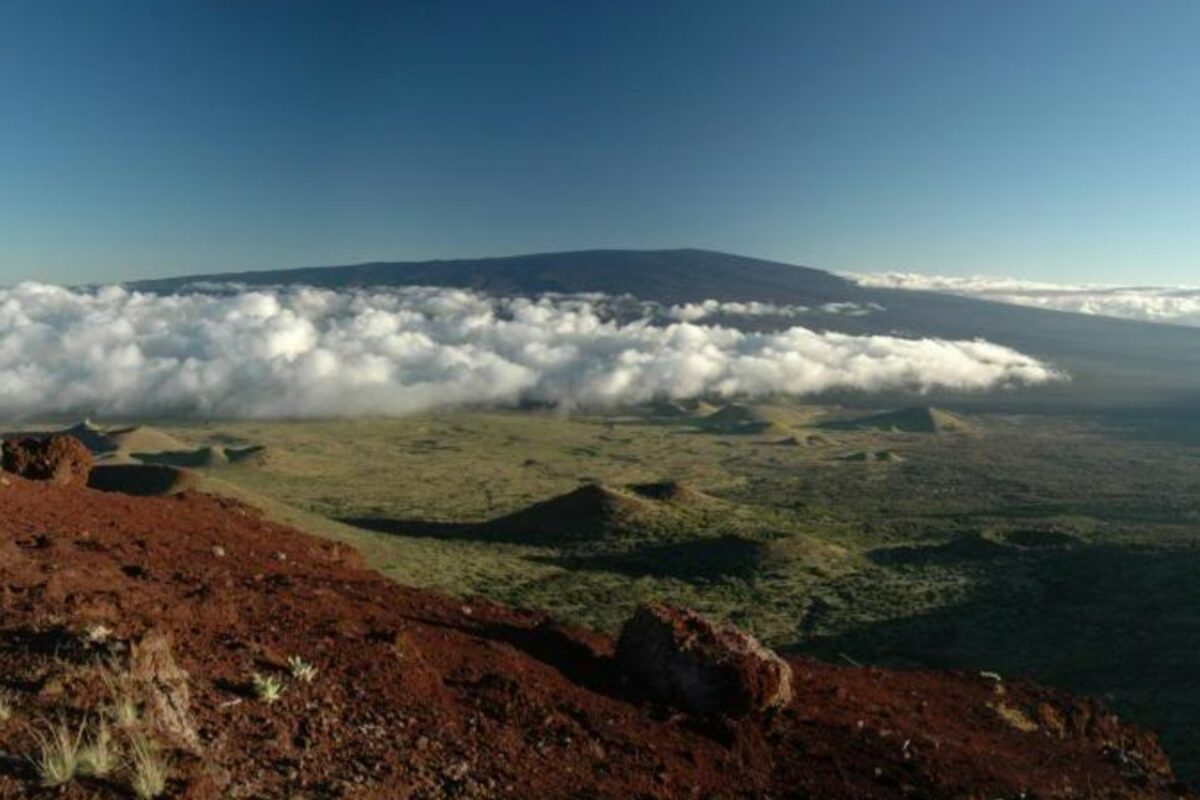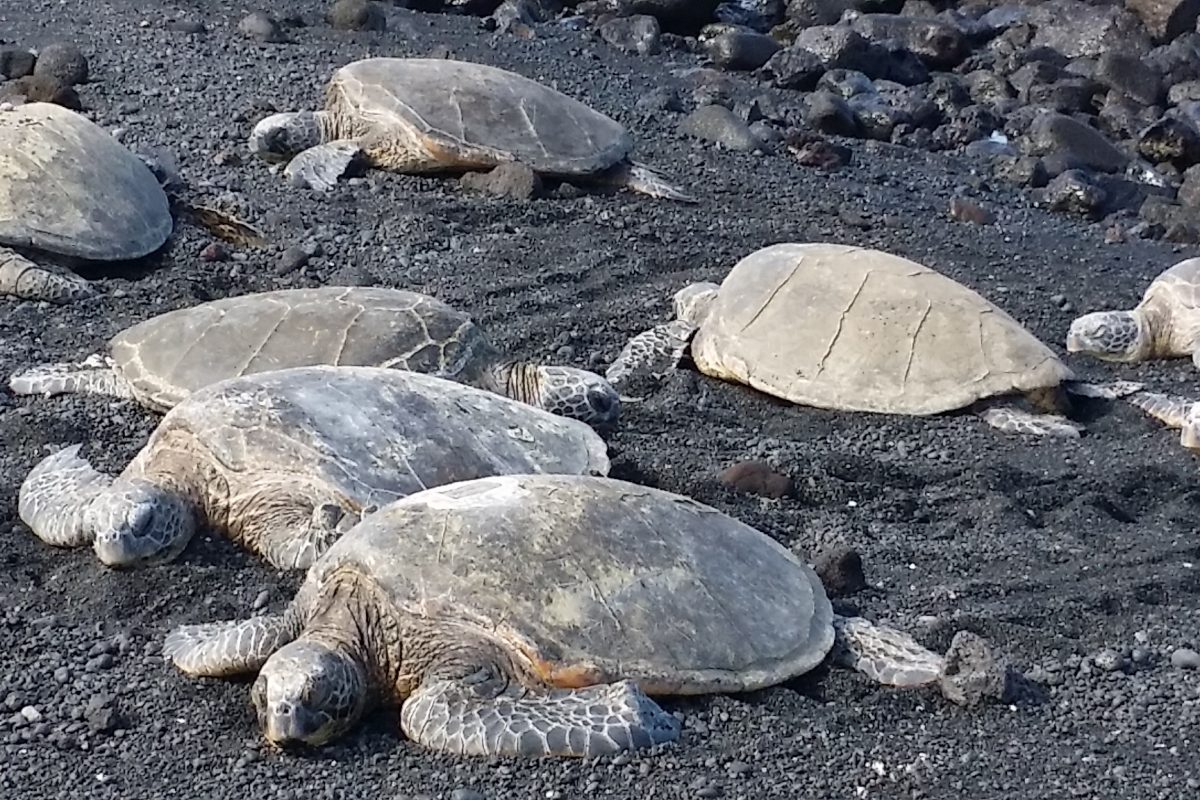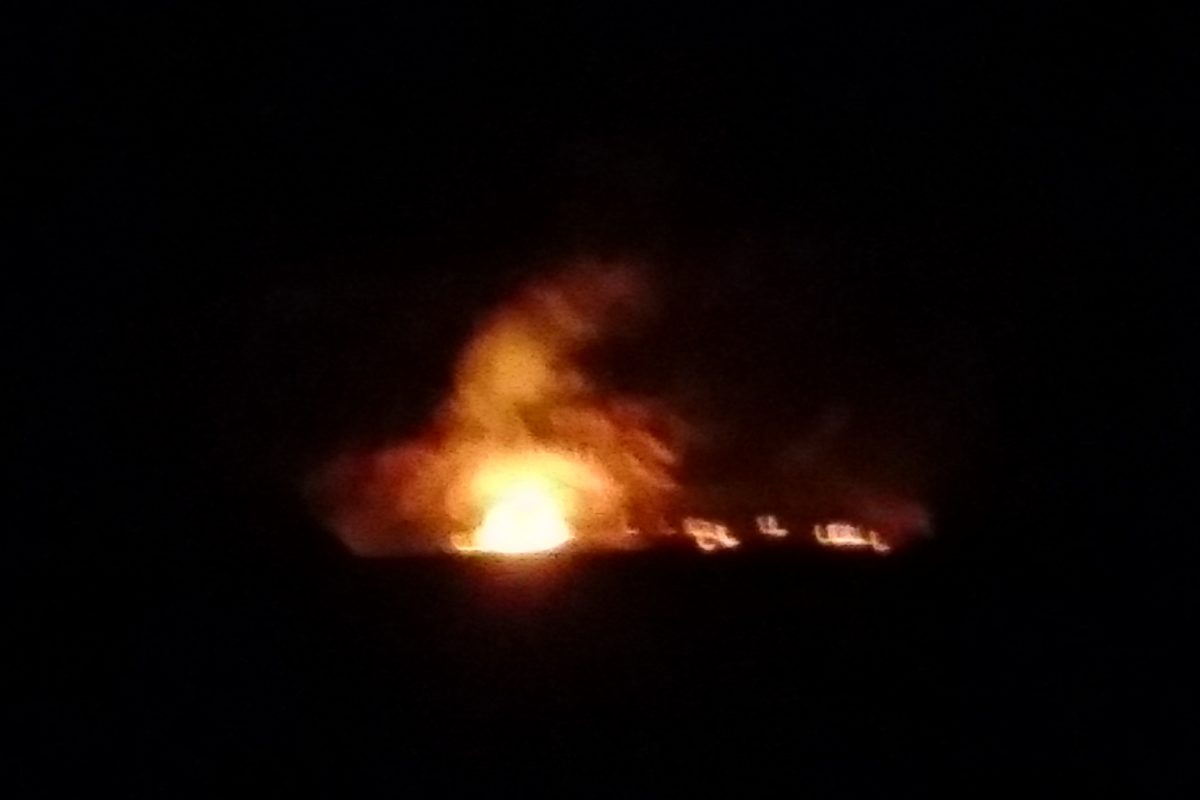What does the project provide?
Transforming Scientific Practices through Teacher Leadership provides a model for place-based professional development that sustains indigenous languages and knowledge. Teachers are recognized as cultural translators who incorporate diverse cultural resources including ancestral knowledge and art into STEA²M (Science, Technology, Engineering, Art and Ancestral Knowledge, Mathematics) curriculum development.
Place-based curriculum aligned to NGSS is developed by teachers and NSF team members. Experiential, field-based, inquiry-oriented K-12 learning activities incorporate real-world applications integrating Hawaiian and 21st Century STEA²M. Hawaiian language translators translate science-related Hawaiian language articles from an archive of over 100 newspapers published from 1834-1948. Articles provide teachers and students with a glimpse into past places and practices through the voices and eyes of ancestors. The wind maps on the right identify winds and their ahupua’a from The Wind Gourd of La’amaomao, a 16th century epic published by Moses Nakuina in 1902 then serialized in Hawaiian language newspapers.
NSF underwrites the collaboration among the College of Education, School of Ocean and Earth Science and Technology (SOEST), School of Hawaiian Knowledge (Hawaiʻinuiākea), and College of Natural Sciences.

News
2024 STEAM SYMPOSIUM: ADVANCING STEM EDUCATION AND WORKFORCE DEVELOPMENT IN AMERICAN SAMOA (July 10-12, 2024)
Talofa and Welcome!
University of Hawaii-College of Education, together with the American Samoa STEAM Education Initiative (SEI) Network brings you the 2024 STEAM Symposium, a 3-day capacity building for our community with the theme of: “Advancing STEM Education & Workforce Development in American Samoa” on July 10,11, and 12th from 9am – 3pm.
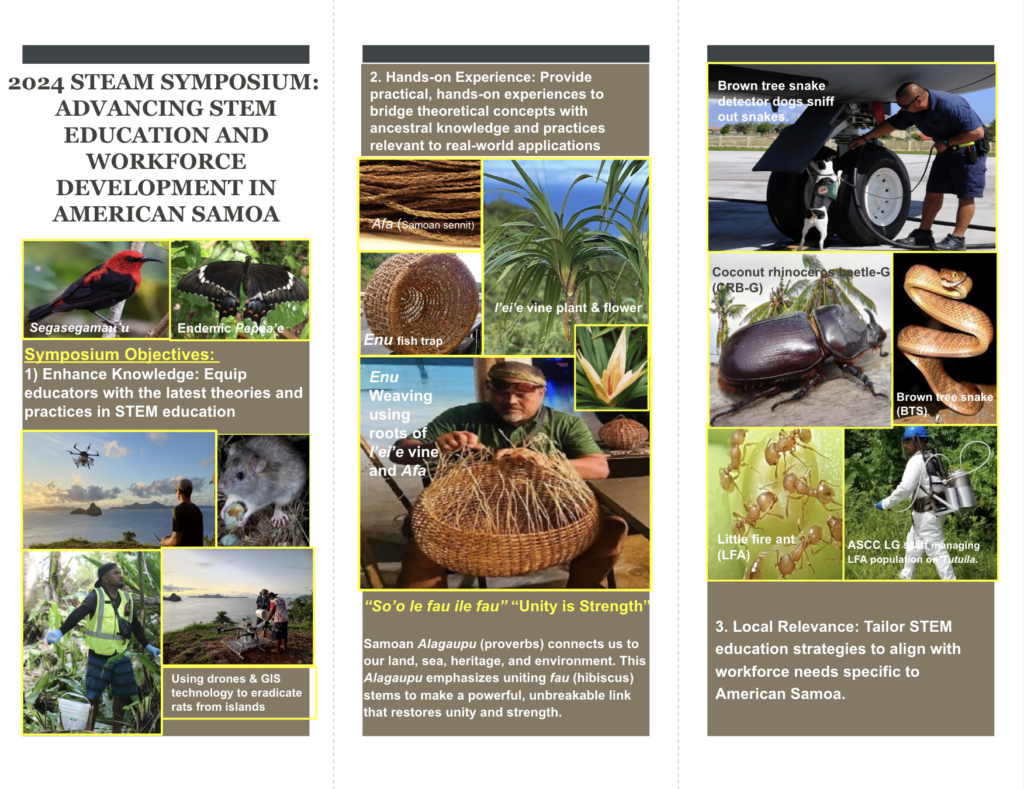
Discover innovative ways to integrate Science, Technology, Engineering, Arts, and Mathematics (STEAM) into education and prepare students for the future workforce. This three-day event brings together educators, industry professionals, community leaders, and policymakers to explore the synergy between STEAM education and workforce development in American Samoa.
Here is the registration form. See you soon!

Seminar with Hokkaido University Graduate Students and Faculty
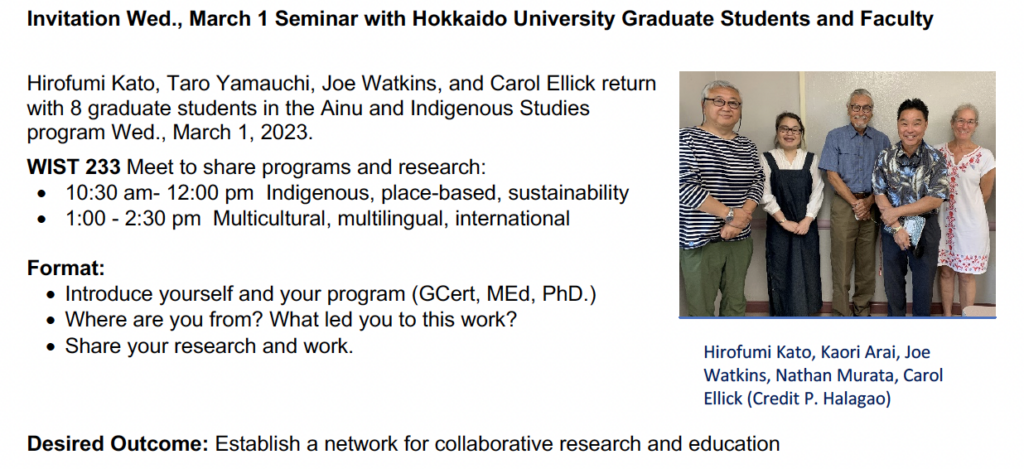
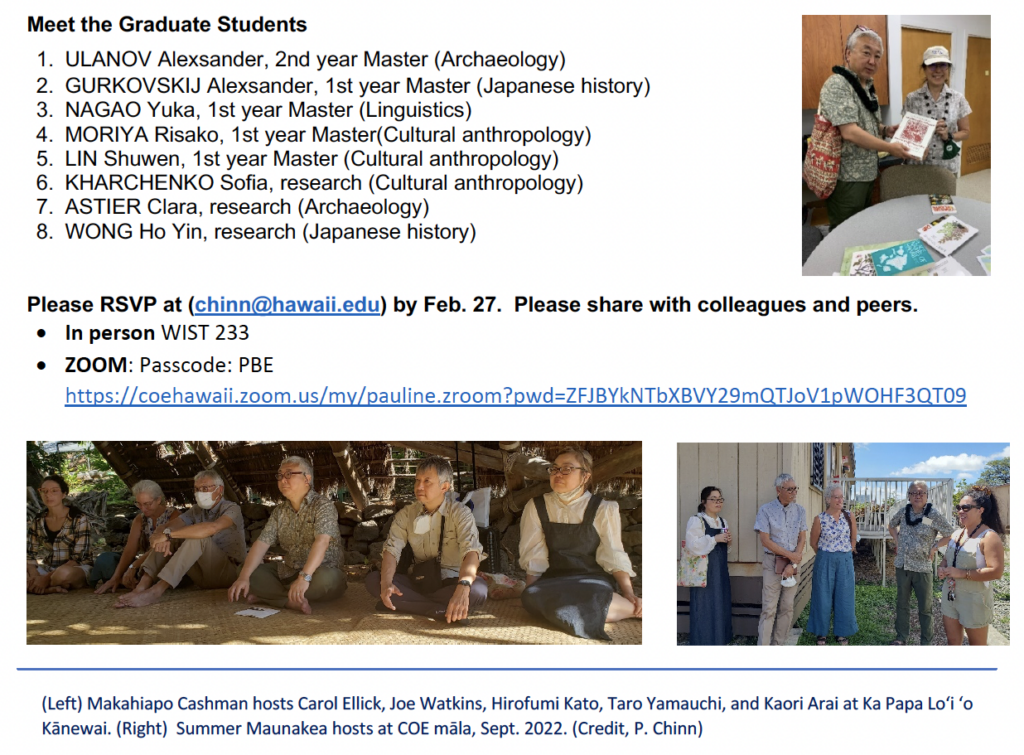
Welcome to Current Events Jan. 23-31, 2022 ʻŌlelo TV broadcasts Pacific Alliance Against COVID-19 Modules 1 - 4.
|
Pacific Alliance Against COVID19: Module 1 History of Infectious Diseases in Hawaii |
||
|
1/23/2022 |
19:30 |
OLELO54 |
|
1/24/2022 |
22:00 |
OLELO54 |
|
1/26/2022 |
8:00 |
OLELO54 |
|
1/29/2022 |
16:30 |
OLELO54 |
|
Pacific Alliance Against COVID19: Module 2 Mookuauhau My Genealogy Beloved Ohana Bubble |
||
|
1/23/2022 |
20:00 |
OLELO54 |
|
1/24/2022 |
22:30 |
OLELO54 |
|
1/26/2022 |
8:30 |
OLELO54 |
|
1/29/2022 |
17:00 |
OLELO54 |
|
Pacific Alliance Against COVID19: Module 3 Protection Prevention |
||
|
1/23/2022 |
20:30 |
OLELO54 |
|
1/28/2022 |
22:00 |
OLELO54 |
|
1/29/2022 |
17:30 |
OLELO54 |
|
1/31/2022 |
8:00 |
OLELO54 |
If you requested your show to be archived on OleloNet, your show will be available on the Internet about two to three days after the first airdate. Just search for your program (using “quote marks” helps narrow down the choices) and distribute the link. Be sure to download the ‘Ōlelo Mobile App! Share the QR code below with your friends and they’ll be able to watch your show using any mobile device using the App.

Spot Light COVID-19 Vaccine Resistance
New NSF-PAAC COVID-19 vaccine resistance curricular materials! This winter poses a triple threat from the contagious omicron variant of COVID-19, flu, and RSV, a respiratory virus affecting young children. Vaccinations for COVID-19 and flu are available for children from the age of 6 months. There is no vaccine for RSV.
The short, 18 slide version is for general audiences and community, the longer 24 slide version describes the science behind the mRNA vaccine. The powerpoints are also posted under Biology lessons.
Spot Light COVID-19 Vaccine Resistance
Spot Light COVID-19 Vaccine Resistance (short version)
Note: Download as Powerpoint to play videos
Welcome to the 2021 SCL Live Webinar Series!



Pacific Alliance Against COVID-19 (PAAC): a RADx-UP/NIH-NSF Partnership linking K-12 education and public health in Hawaiʻi
 What if you’re incarcerated and cannot get information about COVID-19?Questions from Hawaii’s prisoners were translated into 6 Pacific Island languages spoken in prisons. The Hawaiian translation team included an expert in COVID-19, Alika Maunakea, Hawaiian language teachers Alexis Maunakea-Stang and Kaleolani Hanohano, and Puakea Nogelmeier, Emeritus professor of Hawaiian Language. This was the first time in 25 years that the Director of Public Safety has approved a prison community request. The translation is a product of a Pacific Alliance Against COVID-19 and NSF Teacher Leadership collaboration.
What if you’re incarcerated and cannot get information about COVID-19?Questions from Hawaii’s prisoners were translated into 6 Pacific Island languages spoken in prisons. The Hawaiian translation team included an expert in COVID-19, Alika Maunakea, Hawaiian language teachers Alexis Maunakea-Stang and Kaleolani Hanohano, and Puakea Nogelmeier, Emeritus professor of Hawaiian Language. This was the first time in 25 years that the Director of Public Safety has approved a prison community request. The translation is a product of a Pacific Alliance Against COVID-19 and NSF Teacher Leadership collaboration.
COVID-19 information in English COVID-19 information in Hawaiian
COVID-19 curriculum aims to reshape public health education
The COVID-19 pandemic has prompted educators in Hawaiʻi to provide a historical look at contagious diseases in Hawaiʻi and the Pacific. An interdisciplinary curriculum, COVID-19, the Latest Hawaiian Epidemic: Educating for Health, Responsibility, and Resilience Through a Place-Based, Cultural Lens, that compares and contrasts Hawaiian historical timelines and science phenomena associated with COVID-19, is the brainchild of University of Hawaiʻi at Mānoa College of Education Curriculum Studies Professor Pauline Chinn. Please see the news here.
NSF FUNDED PROJECTS
- 2017-2023 NSF Award No. 1721356
- Transforming Scientific Practices to Promote Students Interest and Motivation in the Life Sciences: A Teacher Leadership Development Intervention.
- 2015-2017 NSF Award No. 1551502
- Exploring Ways to Transform Teaching Practices to Increase Native Hawaiian Students’ Interest in STEM.
- 2011-2014 NSF Award No. 1108569
- Kahua A‘o – A Learning Foundation: Using Hawaiian Language Newspaper Articles for Place and Culture-based Geoscience Teacher Education and Curriculum Development.
-
NSF underwrites the collaboration among the College of Education, School of Ocean and Earth Science and Technology (SOEST), School of Hawaiian Knowledge (Hawaiʻinuiākea), and College of Natural Sciences. Any opinions, findings, and conclusions or recommendations expressed in this material are those of the author(s) and do not necessarily reflect the views of the National Science Foundation.


